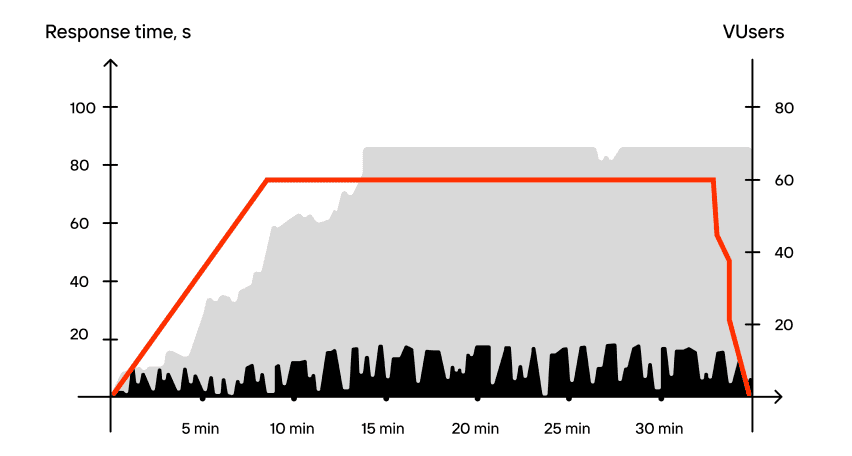Load Testing for Medical Corporation’s Automated System
One of our biggest clients is a network of medical treatment and prevention facilities that holds the key player position in the domestic medical market. The network consists of diagnostic centers, clinic hospitals, medical test centers, family and children’s clinics, health resorts, and wellness centers. It employs approximately 100 doctors of medical sciences and more than 2000 physicians.
The entire customer infrastructure is based on an internal information system (MIS) to automate the workflow:
The PFLB team was hired to test the latter.
Task
The customer had planned to introduce new architecture and needed to know the number of servers required to sustain the maximal system load. We had the following goals:
Solution
Results
We found several important system limitations and internal element conflicts after the first testing iterations. After the system analysis, we developed recommendations on ways to solve those problems. The customer was required to solve them on their own, so that we could perform the testing again and solve the set task.
The hardware analysis led to the required number of the terminal servers to allow the system to sustain the maximum load level. The results allowed the customer to organize the servers and ensure continuous function of the IT infrastructure. This was our first big project working with the RDP protocol that gave us a chance to broaden our knowledge in this area.
Related insights in case studies
From Hundreds to Thousands: Scaling MEFA Pathway Software for Mass Student Registration

FolderWave, Inc. is a leading digital services provider in the Massachusetts e-learning sector. It aids millions of students in researching and planning a job-oriented education. The company delivers IT solutions, platforms, and services in partnership with notable non-profit organizations like MEFA Pathway and College Board, which connect a vast network of colleges, schools, and universities […]
How Load Testing Helped Texans Survive Power Outages During a Storm

Background The largest electric distribution cooperative in Texas and the United States, Pedernales Electric Cooperative (PEC), had to test its new software systems, the Storm Center and the OR&S (Outage Reporting & Status), before the release to ensure their adequate performance under peak load. Challenge PEC had a strict release deadline and needed to test […]
Tynor Prepared the New Website for High Sales in Four Days

Tynor Orthotics is India’s largest manufacturer and exporter of orthopedic and fracture aids established in the 90s to deliver quality healthcare products. Committed to a significant expansion in the next three years, Tynor crafted a new e-commerce website focused on excellent customer experience to support this growth. To be confident at launch, the engineering team of Tynor decided to run pre-go-live stress testing for the website. The tight deadline felt challenging, the customer was relieved to hear we provide a quick load testing solution. Quick Load Testing solution includes a four-day load testing project performed by engineers of PFLB and a 1-month subscription to the innovative load testing PFLB platform.
Bank Increases Load Capacity by 450% to Deal with Business Growth

Our client's bank was absorbing other banks, and the number of individual clients was growing. The system was not ready for expansion or integration. The owners started to suspect bottlenecks when problems with paying salaries to corporate clients’ employees arose. As a result, in the next pay period, the load on the system increased dramatically, and the system got overloaded. People did not get their salaries in time, as the system crashed.
Be the first one to know
We’ll send you a monthly e-mail with all the useful insights that we will have found and analyzed
People love to read
Explore the most popular articles we’ve written so far